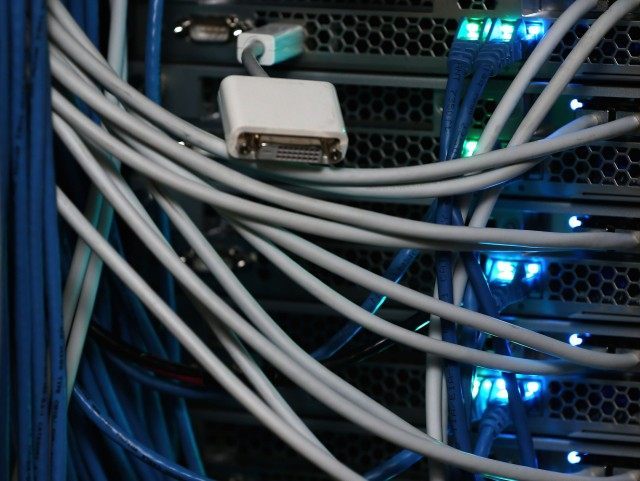The growth of the Internet has been one of the most astounding developments in human history, and it shows no sign of slowing down. In fact, a new report from Business Insider predicts the number of devices connected to the Internet will more than double over the next five years – from 10 billion in 2015, to 34 billion in 2020. That works out to a 28 percent compound annual growth rate.
By way of comparison, for those anticipating the coming Singularity of unified electronic intelligence, a human brain contains about 86 billion neurons. Our planetary electronic brain is shaping up nicely.
The bulk of the growth anticipated by Business Insider will come from “stand-alone Internet-connected devices that can be either monitored and/or controlled from a remote location.” Such devices will grow from 4.2 billion today to 24 billion in 2020, an increase driven largely by business and government users.
In other words, there will be an explosion of robots, cameras, menu screens, and remotely-controlled media displays. Lower operating costs, increased productivity, and the possibility of offering new products and services are said to make these devices attractive to business interests.
For consumers, the first wave of explosive Internet growth came through computers, which went from being business productivity tools and exotic hobbyist toys to indispensable fixtures of the modern household. Email and chat became common forms of communication, leaping the generation gap from eager young early adopters to nearly universal acceptance with amazing speed. The second wave saw this kind of connection become portable, and highly accessible, with the rise of smartphones and tablets.
Now comes the growth of Internet-connected appliances, with everything from television sets to cars picking up an Internet connection. The number of connected devices on the wi-fi network of the average American home is growing; at retail outlets, business offices, and government facilities, it’s already enormous. Such connections allow the delivery of new and updated services to end users and the ability to sense and control environments over long distances.
Society has adjusted to this connectivity explosion remarkably well. We have our lingering suspicions about monitoring, with data collected by everything from cameras and microphones to our web browsers, but the overall response has been enthusiastic acceptance, not paranoia. That’s because this stuff works.
The value delivered by the connectivity explosion to business and personal users is so enormous that its potential drawbacks are simply eclipsed in the public mind. Sure, your smartphone could be used to locate you by some sinister agency… but right now, it just gave you the quickest route to a location you might have had a great deal of trouble finding with paper maps and the naked eye. Research takes minutes instead of hours, and you can do it from anywhere.
Business managers are discovering that public comfort with computers has grown to the point where human contact can be phased out in many retail operations… which is good for the bottom line, given soaring labor costs, but maybe bad news for a generation that will find entry-level jobs have grown scarce.
Consumers are beginning to assume a high level of connectivity on the part of business and government agencies. It strikes them as unusual, indeed deficient, if useful information is not instantly available to everyone they deal with. Doesn’t it seem odd, in 2015, if a service technician or delivery driver asks for directions to your house? Much of the Internet’s growth over the rest of this decade will be driven by the desire of vendors and providers to avoid looking primitive or annoying their customers with practices from the offline era. Expect some remnants of offline commerce, such as paper coupons or physical plastic cards for shopper-loyalty programs, to fade away. Everything that annoys consumers is doomed.
It’s hard to imagine anything that would turn the connectivity explosion – what Business Insider terms the “Internet of Things” — around. A major failure of Internet-connected services might do it, although the public seems relatively untroubled over the long run by the big commercial hacking stories from the past few years. Perhaps there is a reservoir of confidence in the ability of the Internet to evolve beyond its flaws, and it would take more high-profile debacles to shake that confidence.
Would a massive cyber-war strike against infrastructure by hackers, terrorists, or hostile foreign powers scare people away from the networking of all things, or would they decide the benefits are so great that they’ll be patient while security is improved? People want more connections to the Internet, and they trust the wizards of coding to fix any problems that might arise.
In a similar vein, a major story about the outright abuse of data harvested from our electronic devices might prompt second thoughts about how heavily monitored we are, or perhaps the benefits of connectivity will continue to dramatically outweigh most of the public’s reservations. We are more powerful than ever… and more vulnerable than ever.
Pop quiz: how many cameras and microphones do you think are pointed at you right now? After you answer, take a moment to count them all — from the camera and microphone in your phone and tablets, to the webcam in your computer, to the webcam in the other computer behind you that you forgot about, and the voice-command system in your video game console, and the voice-command system in your cable TV box, and oh, yes, that’s right, the smart TV itself has a camera. Was your original estimate correct, or did you have to revise the number upward after you counted the monitoring devices carefully?

COMMENTS
Please let us know if you're having issues with commenting.